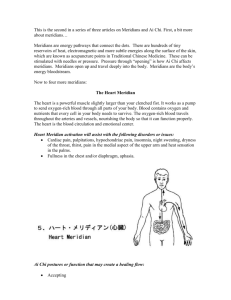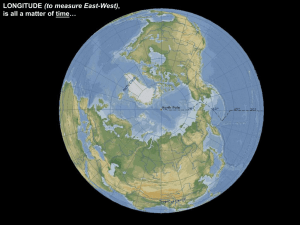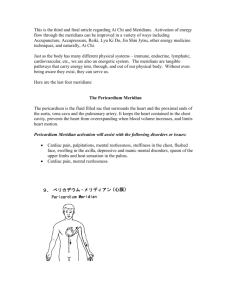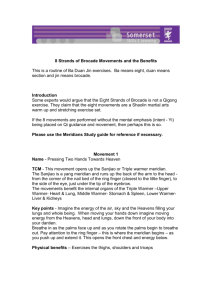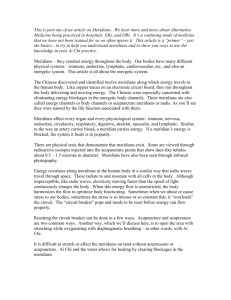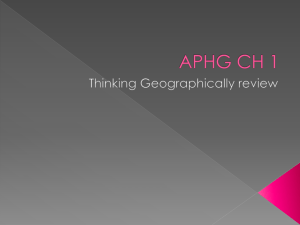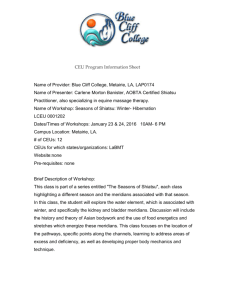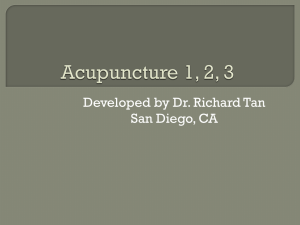Acupuncture-moxibustion
advertisement
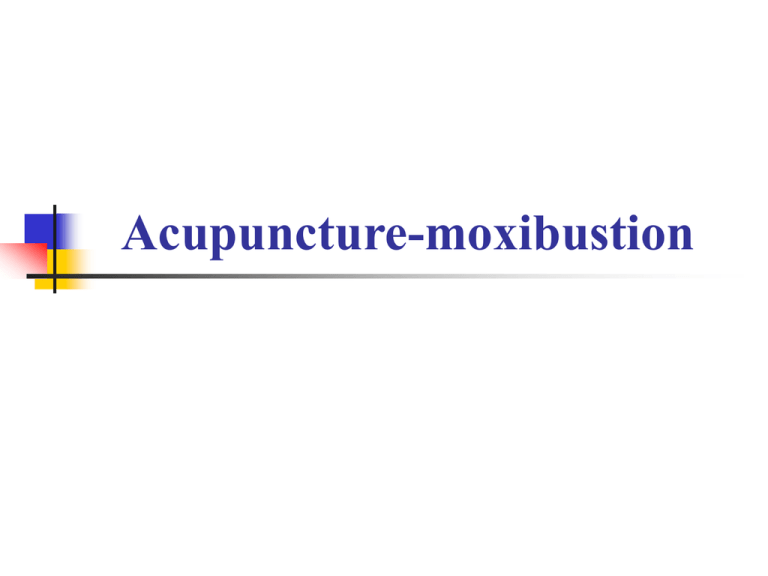
Acupuncture-moxibustion The introduction A household word of medical means in china Does not emply any drug, surgical operation or complicated instrument but only a small needle. Nearly 400kinds of disease could be treated by it. Inserting the needle in Burning moxa艾蒿roll on or over the specific area of the body surface, such as acupoints. To regulating qi and blood of the internal organs and meridians. Up to now, the acupuncture and moxibustion are accepted in many parts of the world. The meridian theory The distribution The functions and The pathologic changes of The twelve regular meridians The eight extrameridians. The twelve regular meridians The lung meridian of Hand-taiyin The large intestine meridian of Handyangming The spleen meridian of Foot-taiyin The heart The liver The kidney, the stomach, sanjiao, pericardium, gallbladder, bladder The running course The eight extrameridians. The conception vessel (Ren Meridian) The governor vessel Du Meridian Chong Meridian Dai Meridian Yinwei Yangwei Yinqiao yangqiao LU LI ST SP HT SI 11 20 45 21 9 19 BL KI PC SJ GB LR 67 27 9 23 44 14 RN 24 DU 28 The concept of Jing-luo Meridian Jing Collateral 侧枝 Luo The meridians are the main passages or trunks which link up interior and exterior and upper and lower parts of the body. The collaterals are the smaller passages or lines which are attached to the meridians and are distributed on the surface of whole body. The main functions of the meridians and collaterals have two parts: Transporting Qi and blood Linking together all the fundamental substances, organs and tissues as a whole. The composition of the meridiancollateral system Twelve regular meridians Eight extra meridians Fifteen collaterals Twelve bypass collaterals Twelve tendon collaterals Twelve sin areas Innumerable micro-collaterals Superficial collaterals Blood collaterals The distribution of meridians Yin and yang Hand and foot Chest and abdomen; back Upper extremities and lower extremities Internal-external interconnections between twelve meridians and organs The lung meridian of Hand Taiyin yangming foot yangming taiyin hand shaoyin taiyang foot taiyang shaoyin hand jueyin shaoyang foot shaoyang jueyin The running course of the meridians The meridian originates from middle energize r(zhong jiao), running downward to connect with the large intestine. Winding back, it goes along the upper orifice of the stomach, passes through the diaphragm, and enters the lung, its pertaining organ. From the portion of the lung, communicating with the throat, it comes out transversely (Zhongfu, LU1),descending along the medial aspect of the upper arm, it passes in front of the Heart meridian and pericardium meridian and reaches the cubital fossa肘窝. Then it goes along the medial aspect of the forearm and its radial border桡侧, ending at medial side of the tip of the thumb (Shaoshang, LU11). The branch proximal接近 to the wrist emerges分 出 from (Lieque, LU7) and runs directly to the radial side of the tip of the index finger (Shangyang LI1) where it links with the large intestine meridian of hand-yangming.
